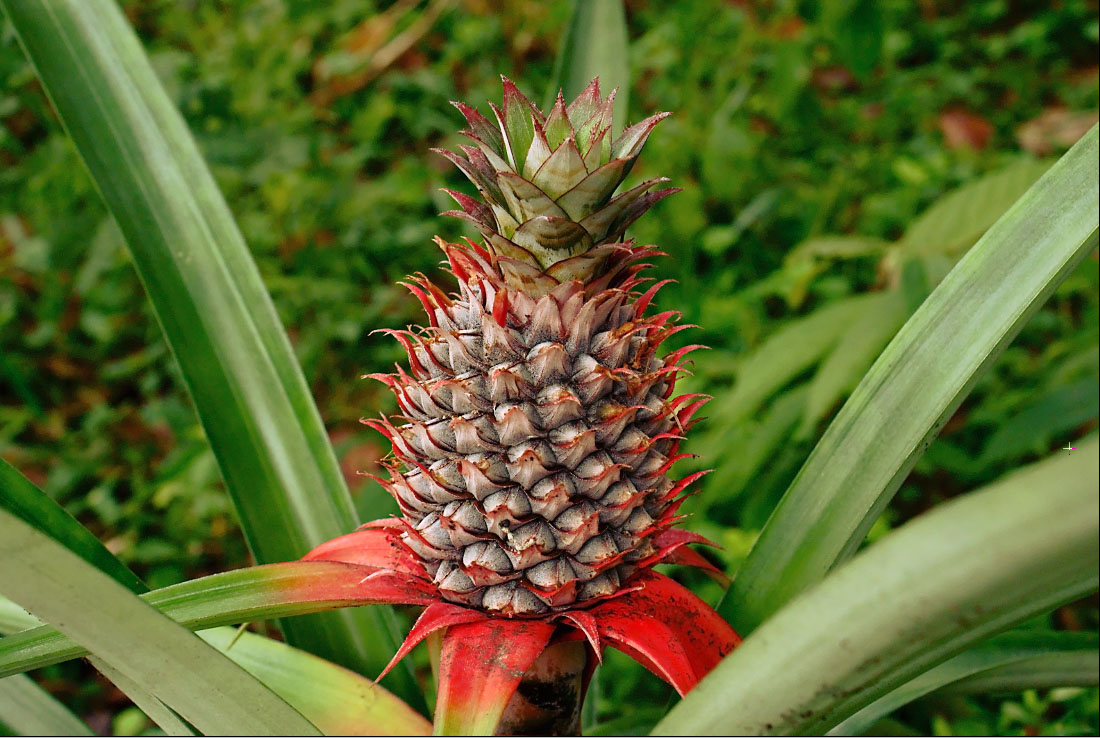Introduction
- One of the most popular tropical fruits, and is known as “Golden Queen” all over the globe.
- Can be grown as mixed crop, hedge plant and as a pure crop.
- Drought tolerant and suitable for marginal lands.
- Contains bromelin enzyme that help digest protein.
- Is a perennial monocarpic herb.
- Trichomes are present that protect stomata.

Composition and uses
- Pineapple has been described as an excellent source of vitamin c and also good source of vit -A and B, Sugar 13 per cent, Acidity-0.6-1.0 per cent mineral matter-0.05 per cent, Fiber, 0.3 per cent, Ca, Fe, P.
- The fruit contains a protein digestive enzyme Bromelin.
- Fruits are relished as dessert in the form of slices either fresh or canned, preparation of juice, squash and jam and mixed jam.
- Candy is prepared from fruit core.
- Fruits are used in preparation of alcohol, vinegar, calcium citrate, citric acid, gum and pineapple flavors.
- The leaves yield silky fiber which is used for making a fine fabric known as Pina cloth in Philippines and Taiwan.
- The pineapple plants and the fruit residues after extraction of juice are used as cattle feed.
Botany
- It has a very short stem (20-30 cm long). The stem is narrow at the base (about 2 cm) and wider on the top (about 6 cm).
- It usually contains 70-80 leaves which are long and narrow. The leaves are arranged in a spiral on a short stem, forming a ‘rosette’
- Inside a leaf water storing tissue and air canals are present which makes the pineapple plants able to withstand draught.
- Flowers (reddish-purple) are 100-200 in numbers. They are hermaphrodite and each flower is borne in the axile of the bract.
- The fruits are formed by fusion of the parthenocarpic fruitlets. The fruit is compound.
- When natural or cross pollination occurs between cultivars and species 2000-3000 very hard seeds may be produced.
- 5-10 flowers open every day, from the base up over a period of 10-20 days.
- Above the flower are other bracts which form the ‘Crown’ of the fruit.
